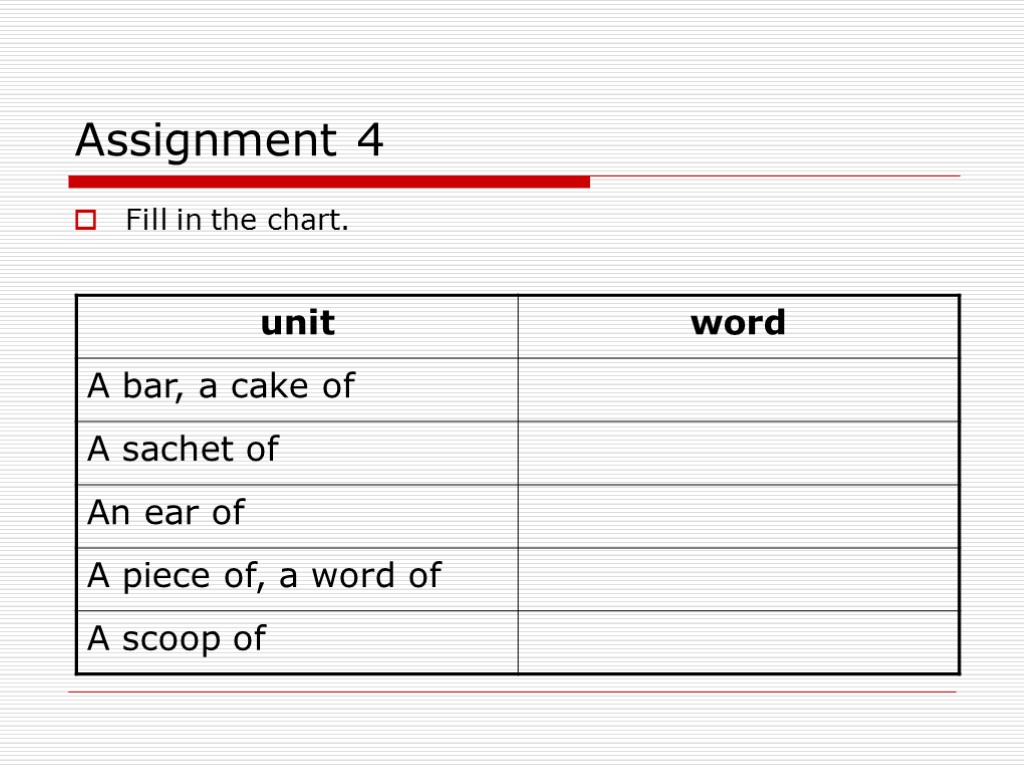 Lexicology 4 – Semantics (cont.) Katarína Veselá 2008
Lexicology 4 – Semantics (cont.) Katarína Veselá 2008
 Set expressions (fixed expressions, idioms) - the word-groups consisting of two or more words, combination of which is integrated as one unit with specialised non-literal meaning of the whole E.g. to sleep like a log, Can a leopard change its spots?, to be busy as a bee.
Set expressions (fixed expressions, idioms) - the word-groups consisting of two or more words, combination of which is integrated as one unit with specialised non-literal meaning of the whole E.g. to sleep like a log, Can a leopard change its spots?, to be busy as a bee.
 Classification according to the function Set expressions functioning like nouns E.g. white elephant, a skeleton in the cupboard, brains trust, dog days Set expressions functioning like verbs Special group – phrasal verbs E.g. the cap fits , to bark up the wrong tree, to keep up with the Jonses; to give up, to make (sth) up, to put (sb) up
Classification according to the function Set expressions functioning like nouns E.g. white elephant, a skeleton in the cupboard, brains trust, dog days Set expressions functioning like verbs Special group – phrasal verbs E.g. the cap fits , to bark up the wrong tree, to keep up with the Jonses; to give up, to make (sth) up, to put (sb) up
 Classification according to the function Set expressions functioning like adjectives. A lot of them are similes - expressions of comparison. E.g. like a bull in a china shop, as old as the hills, as mad as a hatter Set expressions functioning like adverbs E.g. once in a blue moon, time and again, to drink like a fish Set expressions functioning like interjections E.g. Bless (one’s) soul!, God bless me!, Hang it (all)!
Classification according to the function Set expressions functioning like adjectives. A lot of them are similes - expressions of comparison. E.g. like a bull in a china shop, as old as the hills, as mad as a hatter Set expressions functioning like adverbs E.g. once in a blue moon, time and again, to drink like a fish Set expressions functioning like interjections E.g. Bless (one’s) soul!, God bless me!, Hang it (all)!
 Phrases, Proverbs, Quotations Set phrases E.g. Tell it to the horse marines. His bark is worse than his bite. Proverbs – wise sayings, often warnings, which have been passed from generation to generation. Their advice will never be out of date (adages). E.g. It’s no use crying over spilt milk. Don’t count your chickens before they hatch. Familiar quotations E.g. Shakespeare: “Frailty, thy name is woman.” Caesar: “The die is cast.”
Phrases, Proverbs, Quotations Set phrases E.g. Tell it to the horse marines. His bark is worse than his bite. Proverbs – wise sayings, often warnings, which have been passed from generation to generation. Their advice will never be out of date (adages). E.g. It’s no use crying over spilt milk. Don’t count your chickens before they hatch. Familiar quotations E.g. Shakespeare: “Frailty, thy name is woman.” Caesar: “The die is cast.”
 Assignment 1 Give Slovak translation or explanation.
Assignment 1 Give Slovak translation or explanation.
 Assignment 2 Fill in the table with similes with “as … as”.
Assignment 2 Fill in the table with similes with “as … as”.
 Assignment 3 Fill in the table with similes with “like”.
Assignment 3 Fill in the table with similes with “like”.
 Collocations Words can usually be combined (collocated) only with certain words. If we want to master a language properly we should know what words of the language are most likely to occur together – what are the typical collocations. E. g. the noun rain may be collocated with adjectives: driving, heavy, pouring, soaking, torrential, freezing, intermittent, light, steady.
Collocations Words can usually be combined (collocated) only with certain words. If we want to master a language properly we should know what words of the language are most likely to occur together – what are the typical collocations. E. g. the noun rain may be collocated with adjectives: driving, heavy, pouring, soaking, torrential, freezing, intermittent, light, steady.
 Classification of collocations A verb + a noun/pronoun. E.g. reach a verdict, fly a kite, execute a will, reverse a decision, revoke a licence These collocations are highly important for polysemantic nouns. E.g. perform an operation (in a hospital), carry out (conduct) an operation (on the battlefield). An adjective + a noun. E.g. warm, warmest (not “hot”), kind, kindest, best (not “good”) regards; a rough estimate; a formidable challenge
Classification of collocations A verb + a noun/pronoun. E.g. reach a verdict, fly a kite, execute a will, reverse a decision, revoke a licence These collocations are highly important for polysemantic nouns. E.g. perform an operation (in a hospital), carry out (conduct) an operation (on the battlefield). An adjective + a noun. E.g. warm, warmest (not “hot”), kind, kindest, best (not “good”) regards; a rough estimate; a formidable challenge
 Classification of collocations A noun + a verb. E.g. alarms go off (ring, sound), blizzards rage An adverb + an adjective E.g. strictly accurate, sound asleep, keenly (very much) aware A verb + an adverb. E.g. amuse thoroughly, argue heatedly, appreciate sincerely A unit associated with a noun. E.g. a pack of dogs, a pride of lions, a school of whales, a lump of sugar, a drop of oil
Classification of collocations A noun + a verb. E.g. alarms go off (ring, sound), blizzards rage An adverb + an adjective E.g. strictly accurate, sound asleep, keenly (very much) aware A verb + an adverb. E.g. amuse thoroughly, argue heatedly, appreciate sincerely A unit associated with a noun. E.g. a pack of dogs, a pride of lions, a school of whales, a lump of sugar, a drop of oil
 Assignment 4 Fill in the chart.
Assignment 4 Fill in the chart.
 Assignment 5 Fill in the chart.
Assignment 5 Fill in the chart.



























